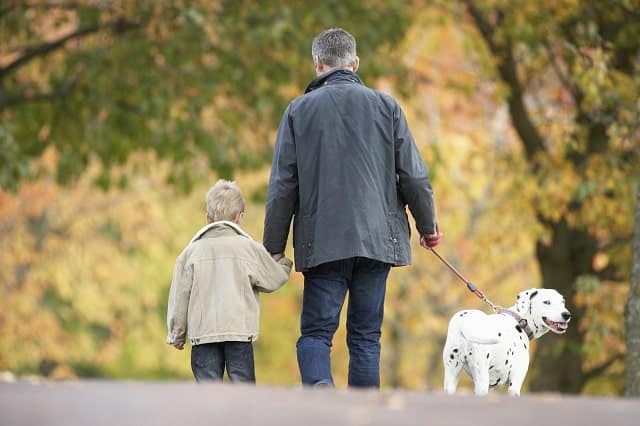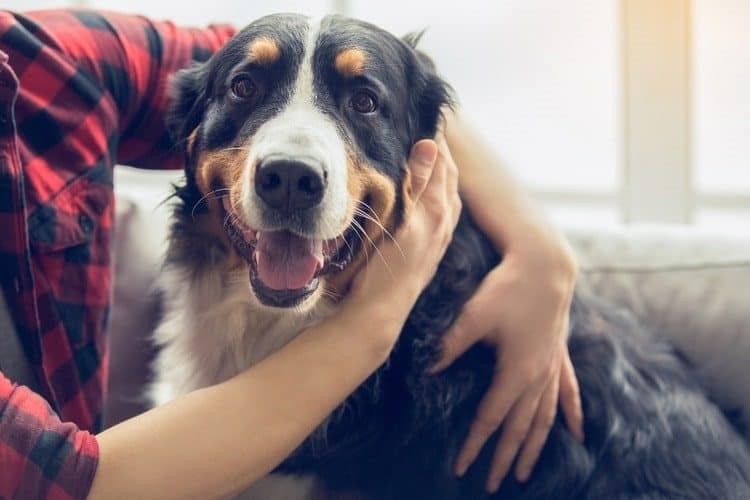Dogs have physical, mental, and emotional needs that, when consistently met, result in a furry, four-footed companion who happily lives life alongside you. Those needs include the obvious, like food and shelter, and somethings that could be forgotten, like regular grooming and time spent with his favorite people. A little rundown on the basics with a reminder of what life with a dog really means can make sure your dog is living his best life.
What Does a Dog Need?
Dogs come with different personalities and quirks, but in general, they’re not complex beings. At their most basic, they need food and shelter. Many a breed is content with nothing more. However, the quality of that food and shelter can make or break their happiness. Dogs can have sensitive stomach, allergies, and personal dislikes that prevent their usual happy-go-lucky personality.
A dog’s naturally cheery disposition may also disappear without:
- Veterinary care
- Exercise
- Regular grooming
Last, but never ever least, there’s love. Loyal and devoted, a dog will follow you to the bitter end, asking very little in return. Love comes in simple, everyday actions like a pat, ear scratch, or brushing at the hand of their Alpha. Here’s a close look at what makes dogs truly happy.
A Healthy, Balanced Diet

Federal and state agencies regulate pet food for quality. They almost entirely base their requirements on the Association of Animal Feed Control Officials (AFFCO) nutrition guidelines. The AAFCO requires pet food labels to include ingredient information based on content quantity, along with feeding directions and proper identification of ingredients. These guidelines also define and regulate the use of terms like human-grade, organic, and natural.1
You want dog food that provides all the necessary vitamins, minerals, and nutrients within your dog’s caloric needs.2
The dog’s size and activity level affect what exactly those caloric needs are. Also, take into consideration your dog’s diet restrictions. Allergies, food sensitivities, and other health conditions can affect their ability to absorb nutrients and limit the number of ingredients they can safely eat.
Look for food with AAFCO approved food labels. These labels list all ingredients in descending order from highest to lowest content. They also include the species for which the food is intended, a guaranteed analysis, feeding directions, and other information that ensures your dog gets the best nutrition. Buy food that’s appropriate for your dog’s life stage. Elderly dogs need higher protein content, while puppies, especially larger breeds, need careful control over their caloric intake to regulate their growth.34 Talk to a veterinarian about your dog’s specific caloric needs and potential diet restrictions. She may even suggest a specific brand.
A Happy Dog Has His Own Space

Dogs are pack animals that are perfectly happy to be in your business all the time. However, they need rest just as much as the rest of us, and their sleep patterns aren’t exactly like ours. Rather than having one long sleep period like people, dogs nap during the day with active periods in the morning and evening.5
To make sure they get enough sleep, they need somewhere to lie down that’s quiet and out of the way. For some homes, the corner of the living room will do. If your home is particularly chaotic, a dog bed in the corner of your bedroom might be a better option.
If your dog spends time in the backyard unaccompanied, you’ll need a secure perimeter to keep him out of the neighbor’s yard and street. Provide a dog house or shaded area where he can escape the sun and rain to keep him comfortable in the outdoors.
Regular Veterinary Care
Your dog may only need their immunizations and a yearly checkup to stay healthy. Other dogs may require daily medication, ear cleaning, teeth cleaning, and the occasional emergency room visit. Establish care with a veterinarian you trust, and keep in touch with her about any concerns that may come up. She’ll help you keep your pet at a healthy weight and diagnose any problems as they arise.
Exercise

Dogs, like people, need exercise to stay healthy, and health = happy. How much exercise they need depends on their size and breed. Border Collies and Beagles are known for their high energy. They’ll need more exercise than a Basset Hound or bulldogs who tend to be more content to sit on your lap. Exercise needs also change with age. Puppies, of course, can run circles around a senior dog of any breed.
Walk your dog at least once a day. If he seems hyper in the evenings, he might need two or three walks a day. You can also take longer walks or try running with your dog if walking just isn’t enough.
Walks aren’t the only way to get exercise. Don’t underestimate the power of games like fetch or hide-and-seek. Anything that gets your dog’s heart pumping can keep him healthy.
Consistent Grooming
Grooming is about more than making your dog look good. It’s a health issue, too, especially for long-haired breeds. Long, gnarled hair can mat, creating tangles that tug and irritate the skin, trap fleas, lead to infections, or potentially cut off circulation.6
Long-haired dogs may need regular appointments with a professional dog groomer. Keep dog grooming clippers on hand to clip problem areas in-between appointments. Also, brush out their hair every other day or so to keep tangles and mats from starting. Some dogs need weekly bathing because they get into the mud and other debris that mats the hair faster. Take steps to keep the dog’s hair clean and tangle-free so his skin stays happy.
Love—It Doesn’t Take Much
It doesn’t take much to win your dog’s affection, but make sure you’re giving him affection too. You are your dog’s pack. Love comes in small, everyday actions. If you’re consistent and loving, you can bet your dog will be happy and healthy.
- AAFCO. Pet Food Labeling Guide. Aafco.org. Accessed March 19, 2021.
- Pet Nutrition Alliance. Understanding Pet Food. PetNutritionAlliance.org. Accessed March 11, 2021.
- Gajanayake I. Senior pets – Dietary advice to offer cat and dog owners. Vet Times. Vettimes.co.uk. Published April 17, 2017. Accessed March 11, 2021.
- ASPCA. Dog Nutrition Tips. Accessed March 19, 2021.
- Takeuchi T, Harada E. Age-related changes in sleep-wake rhythm in dog. Behav Brain Res. 2002;136(1):193-199. doi:10.1016/s0166-4328(02)00123-7
- Watson E, Niestat L. Osseous lesions in the distal extremities of dogs with strangulating hair mats. Veterinary Radiology & Ultrasound. doi:10.1111/vru.12924














